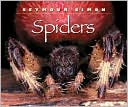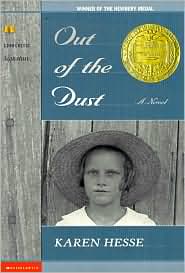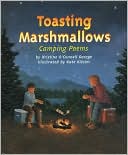
BIBLIOGRAPHY
Lowry, Lois. 1989. NUMBER THE STARS. Boston: Houghton Mifflin. ISBN 0395510600.
PLOT SUMMARY
Annemarie Johansen and her best friend Ellen Rosen are growing up in Denmark during the Nazi occupation. Ellen and her family are in danger when the Nazis start relocating the Danish Jews. Annemarie’s family takes in Ellen while the rest of the Rosen family goes into hiding. When the Nazis search the Johansen apartment looking for Jews, Annemarie’s parents convince the soldiers that dark-haired Ellen is their daughter. The following day Annemarie’s mother takes her, Ellen and Annemarie’s younger sister Kirsti to a coastal town where Uncle Henrik, lives. There Annemarie discovers that even though she is only ten years old, she has the capacity for bravery as she helps her friend and other Jews escape by boat to Sweden.
CRITICAL ANALYSIS
The setting of the story is Copenhagen in the historical context of World War II and the plot focuses on the actions of one young girl, her best friend, and her family. Lowry’s characters are recognizable to her young adult audience as real children who run, play and worry about spelling tests. The reader can also get a sense of life in Nazi-occupied Denmark as Lowry includes historical details such as shortages of sugar, butter and leather. Children will be able to relate to the disappointment of no cupcakes as well as Kirsti’s objections to wearing green, scaly shoes made from fish.
This book may very well be a school-age child’s first introduction to the Holocaust and treatment of Jews during World War II. Lowry is able to give a sense of the danger to Ellen, her family, and all Danish Jews from the conversations that Annemarie either overhears or is part of. The closing of Jewish-owned shops is explained to Annemarie as the Germans’ way of “tormenting” Jews not only in Denmark, but other countries.
While the style of the story is simple, the plot is suspenseful. As the story builds to its conclusion the recurring themes of bravery and friendship are brought into focus as Annemarie becomes more aware of the undercurrents of tension and danger around her. Annemarie recognizes bravery in the adults around her, but questions if she could be brave when needed. Her Uncle Henrik tells her, “It is much easier to be brave if you do not know everything.” As Annemarie’s family rises to the challenge of protecting their Jewish friends and neighbors, Annemarie also learns that being brave is doing what needs to be done to help a friend even though it is dangerous and frightening.
In the “Afterword”, Lowry provides additional historical context for her book. The reader learns that a handkerchief treated with a mixture of cocaine and rabbit’s blood was really used to confuse search dogs. Lowry also elaborates on several of the historical references made in the book such as the destruction of the Danish naval fleet and the resistance fighters. This book is a good introduction for children to the Holocaust and treatment of Jews during World War II.
REVIEW EXCERPT(S)
KIRKUS: “A deftly told story that dramatizes how Danes appointed themselves bodyguards--not only for their king, who was in the habit of riding alone in Copenhagen, but for their Jews.”
SCHOOL LIBRARY JOURNAL: The gripping story of a ten-year-old Danish girl and her family's courageous efforts to smuggle Jews out of their Nazi-occupied homeland to safety in Sweden. Readers are taken to the very heart of Annemarie's experience, and, through her eyes, come to understand the true meaning of bravery.
CONNECTIONS
This book is a good introduction to a history unit on World War II and the treatment of Jews.
Other books by Lois Lowry:
Lowry, Lois. THE GIVER. ISBN 0395645662
Lowry, Lois. GOSSAMER. ISBN 0385734166
Lowry, Lois. GATHERING BLUE. ISBN 0618055819
Other books about Jews in World War II:
Frank, Anne. THE DIARY OF A YOUNG GIRL. ISBN 0553296981
Littlesugar, Amy. WILLIE AND MAX: A HOLOCAUST STORY. ISBN 0399234837Gross, Elly. ELLY: MY TRUE STORY OF THE HOLOCAUST. ISBN 0545074940
Lowry, Lois. 1989. NUMBER THE STARS. Boston: Houghton Mifflin. ISBN 0395510600.
PLOT SUMMARY
Annemarie Johansen and her best friend Ellen Rosen are growing up in Denmark during the Nazi occupation. Ellen and her family are in danger when the Nazis start relocating the Danish Jews. Annemarie’s family takes in Ellen while the rest of the Rosen family goes into hiding. When the Nazis search the Johansen apartment looking for Jews, Annemarie’s parents convince the soldiers that dark-haired Ellen is their daughter. The following day Annemarie’s mother takes her, Ellen and Annemarie’s younger sister Kirsti to a coastal town where Uncle Henrik, lives. There Annemarie discovers that even though she is only ten years old, she has the capacity for bravery as she helps her friend and other Jews escape by boat to Sweden.
CRITICAL ANALYSIS
The setting of the story is Copenhagen in the historical context of World War II and the plot focuses on the actions of one young girl, her best friend, and her family. Lowry’s characters are recognizable to her young adult audience as real children who run, play and worry about spelling tests. The reader can also get a sense of life in Nazi-occupied Denmark as Lowry includes historical details such as shortages of sugar, butter and leather. Children will be able to relate to the disappointment of no cupcakes as well as Kirsti’s objections to wearing green, scaly shoes made from fish.
This book may very well be a school-age child’s first introduction to the Holocaust and treatment of Jews during World War II. Lowry is able to give a sense of the danger to Ellen, her family, and all Danish Jews from the conversations that Annemarie either overhears or is part of. The closing of Jewish-owned shops is explained to Annemarie as the Germans’ way of “tormenting” Jews not only in Denmark, but other countries.
While the style of the story is simple, the plot is suspenseful. As the story builds to its conclusion the recurring themes of bravery and friendship are brought into focus as Annemarie becomes more aware of the undercurrents of tension and danger around her. Annemarie recognizes bravery in the adults around her, but questions if she could be brave when needed. Her Uncle Henrik tells her, “It is much easier to be brave if you do not know everything.” As Annemarie’s family rises to the challenge of protecting their Jewish friends and neighbors, Annemarie also learns that being brave is doing what needs to be done to help a friend even though it is dangerous and frightening.
In the “Afterword”, Lowry provides additional historical context for her book. The reader learns that a handkerchief treated with a mixture of cocaine and rabbit’s blood was really used to confuse search dogs. Lowry also elaborates on several of the historical references made in the book such as the destruction of the Danish naval fleet and the resistance fighters. This book is a good introduction for children to the Holocaust and treatment of Jews during World War II.
REVIEW EXCERPT(S)
KIRKUS: “A deftly told story that dramatizes how Danes appointed themselves bodyguards--not only for their king, who was in the habit of riding alone in Copenhagen, but for their Jews.”
SCHOOL LIBRARY JOURNAL: The gripping story of a ten-year-old Danish girl and her family's courageous efforts to smuggle Jews out of their Nazi-occupied homeland to safety in Sweden. Readers are taken to the very heart of Annemarie's experience, and, through her eyes, come to understand the true meaning of bravery.
CONNECTIONS
This book is a good introduction to a history unit on World War II and the treatment of Jews.
Other books by Lois Lowry:
Lowry, Lois. THE GIVER. ISBN 0395645662
Lowry, Lois. GOSSAMER. ISBN 0385734166
Lowry, Lois. GATHERING BLUE. ISBN 0618055819
Other books about Jews in World War II:
Frank, Anne. THE DIARY OF A YOUNG GIRL. ISBN 0553296981
Littlesugar, Amy. WILLIE AND MAX: A HOLOCAUST STORY. ISBN 0399234837Gross, Elly. ELLY: MY TRUE STORY OF THE HOLOCAUST. ISBN 0545074940







